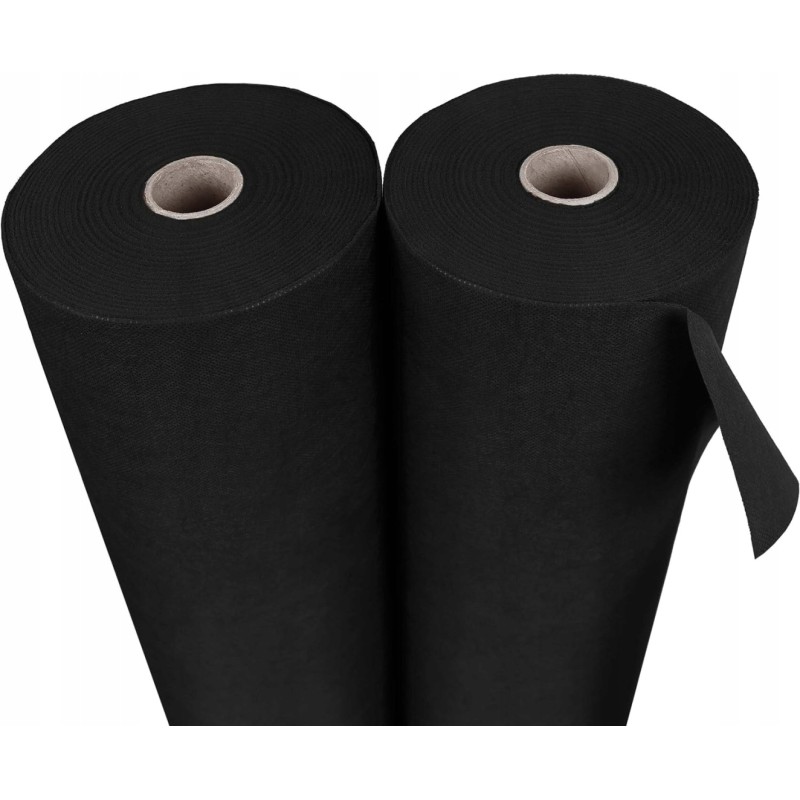Agrotextile uv p-150 1.6x25m black
geoc 1.6x25b p150
agrotextile black with a grammage p-150 g/m2 premium is one of the most durable mulching agrotextiles. Its high grammage guarantees a long product life. Due to the above, it is used for mulching plants to suppress weed growth. The porous structure of the agrotextile allows for free permeation of rainwater, irrigation and liquid fertilizers, preventing the soil from drying out. agrotextile with a weight of 150 g/m2 is very thick, thanks to which, intensively shading the surface, it prevents weeds from germinating.
ideally suited for establishing beautiful rockeries and slopes.
very high weight of 150g/m2
main features:
width: 1.6m
length: 25 m
weight: 150g/m2
color: black
UV stabilization
country of origin: Poland
dimension tolerance: +/-5%
incredibly durable and uniform structure
protects plants against
weeds without the need to use herbicides,
soil pests,
water evaporation
heat loss
benefits of mulching
preservation of heat, humidity and airiness of the soil
favorable microclimate
supplying food for soil life - the humus layer increases and is enriched with nutrients, soil protection against rain and wind, thanks to which the humus layer is not damaged
supply of crops with additional amounts of carbon dioxide thanks to the decomposition of mulch by soil organisms
it is used to mulch many species of crops, but also ornamental shrubs and flowers. it primarily prevents the growth of weeds, which makes it easier to care for planted plants.
black agrotextile improves phytosanitary conditions, thanks to which plants are less susceptible to diseases!!!
black agrotextile also acts as a specific waterproofing agent, protecting the soil from excessive moisture loss, while being permeable to water, unlike black foil. another advantage is the increase in soil temperature due to the cover, which in turn promotes the development of the root system.
method of use
mulching the soil before sowing or planting: in the places where seeds are planned to be sown or seedlings are planted, holes should be made by cutting the sign x or v with a knife or razor blade. Then sowing or planting is done in the cut holes.
mulching the soil around plants that are already growing: black agrotextile replaces mulching the soil with bark (under conifers, hedges, etc.), therefore the soil around plants that are already growing can be covered with a strip of agrotextile, cutting it from the edge, pushing the cutout to the trunk and then attaching the nonwoven fabric to the soil. the place covered with agrotextile can be sprinkled with fertilizer, irrigated and liquid fertilizers can be used. damaged fragments of agrotextile can be removed or covered with successive layers, maintaining a practical and aesthetic substrate. all kinds of decorative stones, bark, grit can be poured onto the agrotextile.
mulching the soil before harvest: agrotextile used around plants in tunnels and in field crops (strawberries, cucumbers) ensures beautiful, clean fruit harvests without the need to use troublesome straw.
studies have shown that mulching significantly accelerates the vegetative growth of plants.
additional use of agrotextile
water ponds: protects foil and geomembranes used in the construction of ponds, water pools and green roofs from mechanical damage. prevents stones and roots from breaking through the insulating foil.
road construction: strengthens roads, paths, driveways, parking lots, terraces and playing fields, as a separation layer it creates a barrier and separates clay, dusty soil, etc. from the structural layers of the surface. replacing the substrate becomes unnecessary (saving aggregate). limits the formation of ruts.
vertical drainage, drainage pipes: protects the vertical foundation foil from clogging with soil. drains water and keeps basement walls dry. protects drainage systems from silting up.










